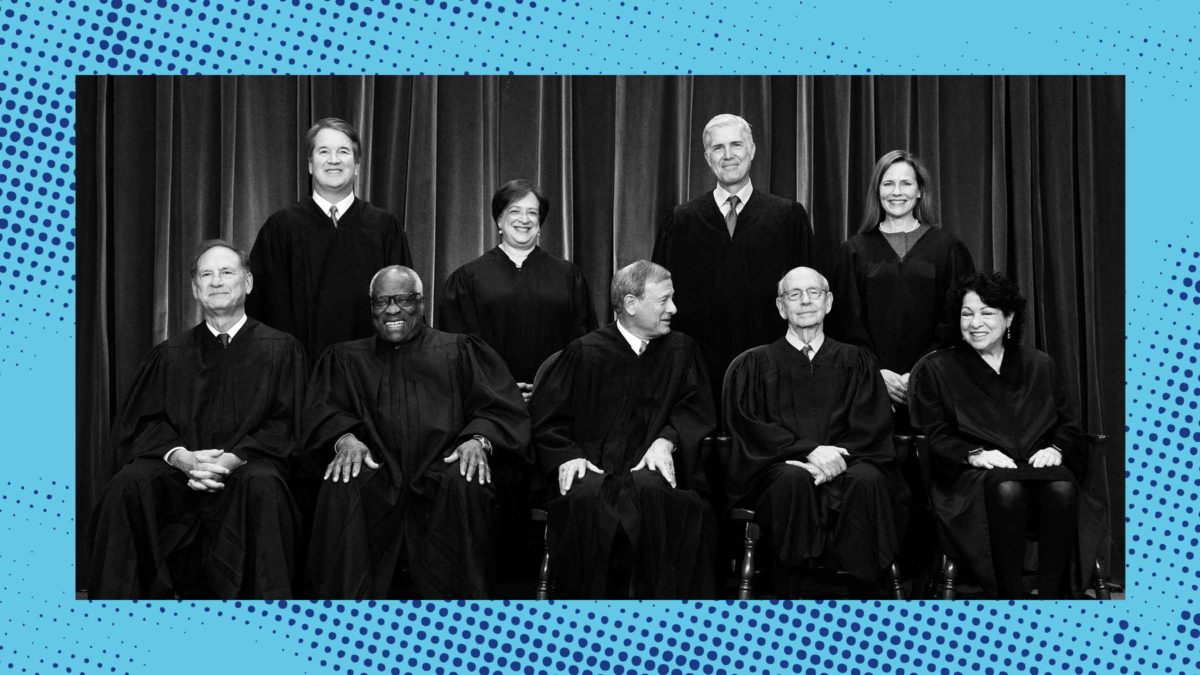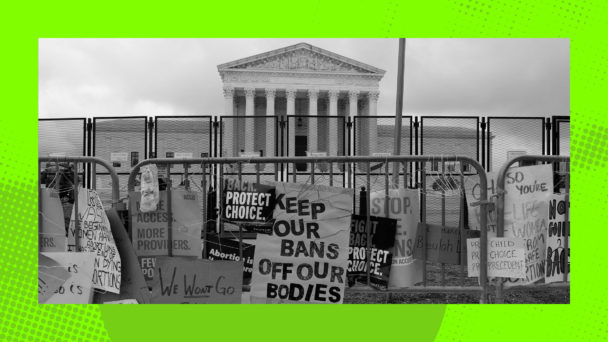The Voting Rights Act of 1965 has been on life support for the past decade, mortally wounded by the Supreme Court’s 2013 decision in Shelby County v. Holder, and wound salted in Brnovich v. Democratic National Committee just two terms ago. This left many court watchers—and maybe even some justices—wondering whether the Court would finish the job in Allen v. Milligan. But a 5-to-4 majority issued a surprising ruling in the case on Thursday that keeps Section 2 of the act breathing, however shallowly. The opinion was authored by Chief Justice John Roberts, who I can only assume held his nose when upholding a law meant to protect voters of color from unlawful attacks on our exercise of political power.
The question in Milligan was whether Alabama’s congressional map likely violated Section 2 by diluting the voting power of Black Alabamians. As the 2020 Census showed, the Black population in Alabama has been growing, yet their political influence has not. Black people make up more than 1 in 4 Alabamians, but were a majority in only one of its seven congressional districts. This effectively constrained Black voters’ ability to elect a candidate of their choice to that single district. Notably, that one seat is also the product of citizen-sought judicial intervention under Section 2; after the 1990 Census, voters successfully challenged Alabama’s redistricting plan and won a court-ordered map that created a majority-Black district. The election held in 1992 relied on that court-ordered map, which allowed voters in the new district to elect Alabama’s first Black congressman since Reconstruction.
Roberts, of all people, recounts this and other history about Alabama and Section 2 in his majority opinion in Milligan—a case that yet again found Black Alabamians crossing their fingers and counting on courts, rather than their legislature, to attain meaningful representation in Congress. Roberts didn’t do anything especially groundbreaking—he simply applied settled law to a discrete set of facts and largely affirmed a finding by a lower court, which included two Trump appointees, that Alabama’s maps violated Section 2.
Perhaps aware that handing it to the same state that gutted the Voting Rights Act a decade ago in Shelby County would be a bad look, Roberts—plus Justices Sonia Sotomayor, Elena Kagan, Brett Kavanaugh, and Ketanji Brown Jackson—declined to go any further. Alabama wanted more, going so far as to maintain that reading Section 2 to allow an additional district where Black voters would have an actual shot at representation was itself unconstitutional. Roberts batted away those claims of unconstitutionality by leaning on precedent to preserve what’s left of what was once the most effective piece of civil rights legislation in American history. For once, he did the bare minimum and said what the law is.
For Alabama and for the dissenting justices in varying degrees—among them Clarence Thomas, Samuel Alito, Neil Gorsuch, and Amy Coney Barrett—race cannot be used proportionally in addressing a racial harm, so drawing electoral maps that re-empower Black voters proportionally to their numbers is simply a nonstarter. In their world, so-called race-neutrality is the be all, end all of redistricting. Perhaps inspired by Justice Jackson’s dismantling of the race-neutrality farce (or by fear of their ever-dropping approval rating), Roberts and Kavanaugh joined the Court’s liberal members and declined Alabama’s sloppy invitation to undo decades of precedent in a way that would’ve rewritten Section 2. Roberts noted that the fear Section 2 “may impermissibly elevate race in the allocation of political power within the States is, of course, not new.” Yet the law as it stands today is what it is, and “a faithful application of our precedents and a fair reading of the record before us,” Roberts wrote, meant that Alabama’s original plan couldn’t stand.
Given the Supreme Court’s established record of undermining democracy and the chief justice’s long-held, well-documented contempt for the Voting Rights Act, it’s tempting to see this basic application of law as an unqualified win. And it is absolutely a relief that the Court preserved this legal avenue for communities to challenge race-based threats to their ability to participate in the political process. But Milligan also feels like being relieved that the chief justice didn’t also punch me in the face after he already knocked me down—appreciated, John, but not punching me is what you’re supposed to do. Thursday’s decision is also a day late and a dollar short for the Alabama electorate. The Court issued an unsigned order last year preventing the lower court’s decision from going into effect in time for the November 2022 midterm elections, which meant that Alabamians went one congressional cycle without proper representation. By deciding to pause the lower court’s order blocking the use of the maps they now agree were illegal, the Supreme Court effectively gave the Alabama legislature One Free Pass for Racism.
Allen v. Milligan should have been an easy case. The lower court did exactly what it was supposed to do according to 40 years of precedent. Five members of the highest court also managed to apply well-established law to clearcut facts. That the case was a nailbiter at all reflects the radicalization of the Supreme Court—and corresponding plummeting public trust in its willingness to safeguard what remains of our democracy. As some of the dissenters made plain, they are prepared, when the time comes, to find Section 2 of the Voting Rights Act unconstitutional. And Kavanaugh, who was in the majority, used a concurrence to signal that he would be open to arguments that Section 2’s application to racial gerrymanders should be time-limited—similar to Shelby County’s invocation of an imaginary world where racism no longer exists so voter protections have outlived their usefulness and legality.
Where does all of this leave us? Racial gerrymandering is still illegal for now—and Section 2 may even lead to some wins for Black people in current redistricting litigation. But six far-right judicial activists still make up a supermajority of the Supreme Court. Alabama felt comfortable bringing its absurd challenge to Section 2 because it saw all the friendly reactionary faces on the bench and had good reason to think that what worked in Shelby County and what worked in Brnovich and what worked in Dobbs would also work here. The Court’s ruling leaves most of the country unscathed today, but we must not be fooled into thinking it will protect us tomorrow.




